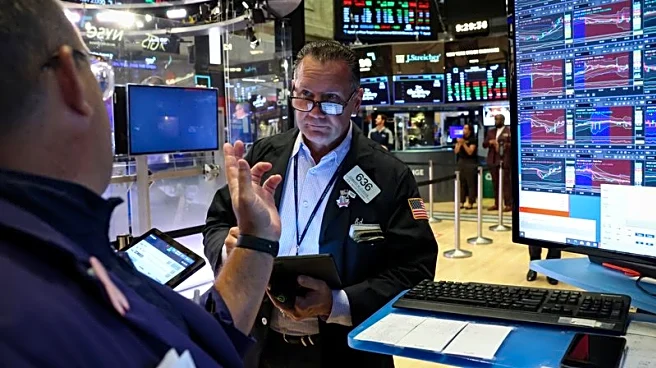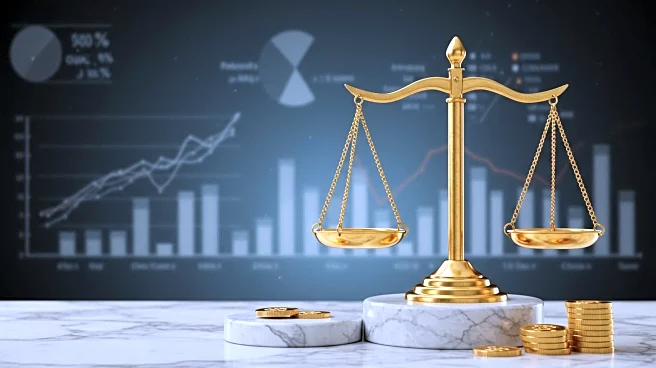What's Happening?
The U.S. manufacturing sector has shown significant improvement, with the Markit Manufacturing PMI for August 2025 rising to 53.3, surpassing the expected 49.5. This marks the highest PMI reading since May 2022, indicating a strong rebound in factory activity. The increase is attributed to growth in production, new orders, and employment, suggesting a positive shift in the economic cycle. The data points to a potential rotation in sector strategies, with industrials, materials, and consumer discretionary sectors possibly gaining traction after lagging in recent years.
Why It's Important?
The surge in the PMI suggests a revitalization of the manufacturing sector, which could lead to increased investor interest in cyclical sectors. Historically, sectors like industrials and materials have performed well during manufacturing upturns. However, inflationary pressures and tariffs remain challenges, particularly for sectors like automotive and discretionary retail. The Federal Reserve's policy decisions, including potential rate cuts, could further influence market dynamics. This development may also impact capital flows into emerging markets, where central banks are cutting rates more aggressively.
What's Next?
Investors are advised to adopt a balanced approach to sector rotation, focusing on financials and essentials-driven equities while cautiously considering industrials and materials. The Federal Reserve's upcoming rate decision could affect financial sectors, which have benefited from high net interest margins. Additionally, emerging markets may see increased capital flows due to shifting inflationary dynamics and a weaker U.S. dollar. Active management will be crucial in navigating the complexities of policy divergence and structural shifts in the global economy.
Beyond the Headlines
The PMI's strength could lead to strategic shifts in investment portfolios, emphasizing agility and diversification. As the U.S. economy navigates inflation and policy changes, sectors with pricing power, such as critical minerals and energy, may offer opportunities for growth. The evolving trade dynamics and the Federal Reserve's dual mandate will require investors to remain vigilant and adaptable to capture potential gains while mitigating risks.












